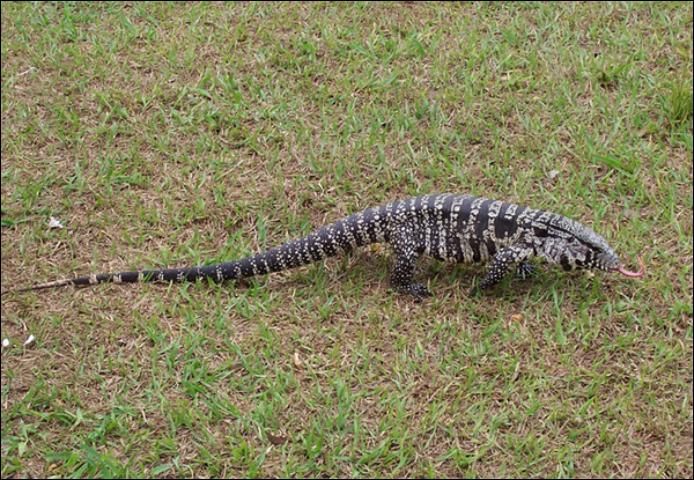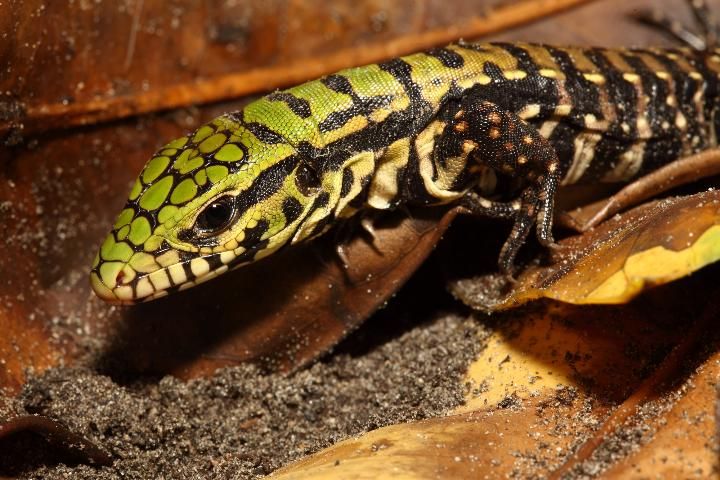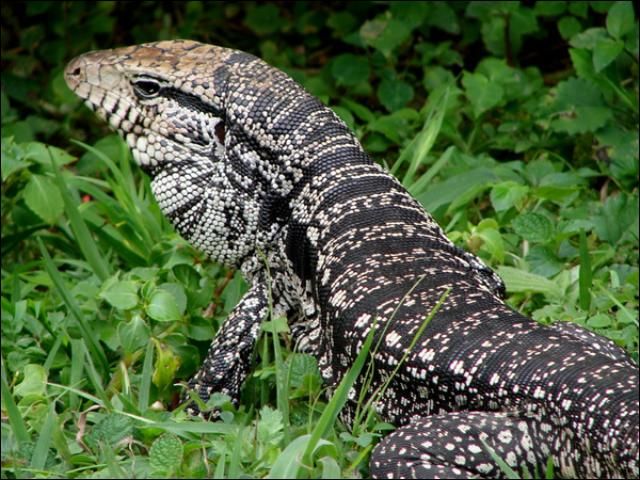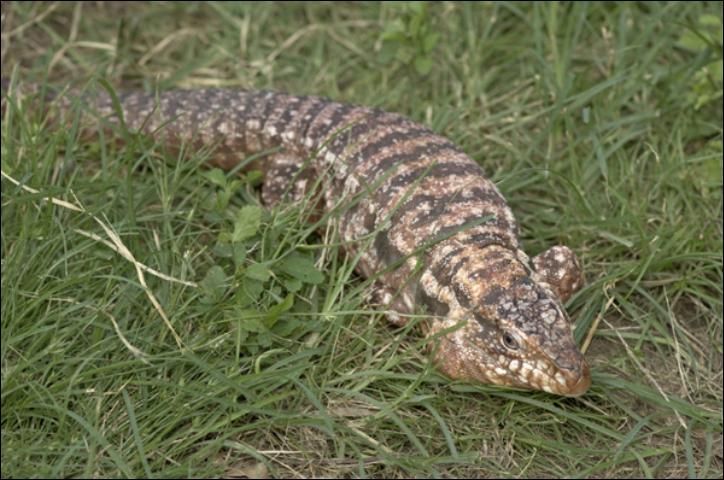
Credit: Mauro Teixeiro, Jr., Universidade de São Paolo, Brazil
Report tegu lizard sightings immediately:
Call the Florida Fish and Wildlife Conservation Commission's invasive species hotline at 1-888-IveGot1 (1-888-483-4681) to report live tegus.
Also visit the EDDMapS site to report positive or suspected tegu sightings: https://www.eddmaps.org/report/. You will need to sign up and create an account (which only takes a few minutes) to make a report. Ideally, please upload a digital image of the lizard with your report. If you prefer to submit reports from your smartphone, simply download the free IveGot1 application to your iPhone from the App Store. For android phones, the IveGot1 application can be found at the Google Play store.
The Argentine black-and-white or giant Argentine tegu (Salvator merianae), native to South America, was brought to Florida for the pet trade and has become established in four areas of the state: southern Miami-Dade County, southwest Charlotte County, west-central Hillsborough County, and eastern St. Lucie County. Tegus are now listed as a Prohibited Species in Florida and may not be possessed without a permit from the Florida Fish and Wildlife Conservation Commission. Individual lizards belonging to this species and two other tegu species have also been captured across the Florida peninsula, with numerous records from the Panhandle. These large lizards grow to 4–5 feet long and may weigh as much as 10 lbs. Argentine black-and-white tegus eat fruits and invertebrates as well as small mammals, amphibians, and reptiles. They also consume reptile and bird eggs. Tegus could negatively impact threatened and endangered species, including gopher tortoises—they are known to eat small tortoises. Tegus have been observed eating alligator eggs and could be a problem for threatened American crocodiles in southern Florida. Tegus are opportunistic predators and will also eat carrion (dead animals). They are active during the day and in west-central Florida they inhabit dry uplands with sandy soils, including natural, urbanized, and agricultural areas. In southern Florida, they occur in densely vegetated areas along canals and roadsides. Tegus could potentially become an agricultural pest or a source of bacterial contamination of food crops. These lizards may dig their own burrows but also invade the burrows of native species, such as gopher tortoises. Argentine black-and-white tegus remain underground during late fall and winter months, which allows them to avoid freezing temperatures. As a result, they have the potential to expand their range across much of the Southeast. An established population already exists in southeast Georgia. Female Argentine black-and-white tegus in south Florida mature in 2-3 years and lay approximately 30 eggs per clutch in the spring and summer. They may live 15–20 years.

Credit: Dustin Smith, Zoo Miami

Credit: Mario Sacramento, Universidade de Alfenas, Brazil

Credit: Patrick Lynch, South Florida Water Management District (2009)
Identification
Learn more about Argentine black and white tegus, including what to do with a pet tegu you are no longer able to care for, at this site: https://myfwc.com/wildlifehabitats/profiles/reptiles/argentine-black-and-white-tegu/
Acknowledgments
This project was made possible in part by a grant from the South Florida National Parks Trust and the Ferris Greeney Family Foundation, and by the USDA-RREA. This document was created as additional reference material for the Introduced Reptile Early Detection and Documentation training program, also known as REDDy, which has since been retired and is no longer available.